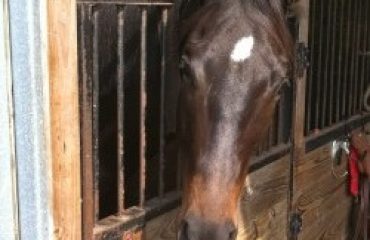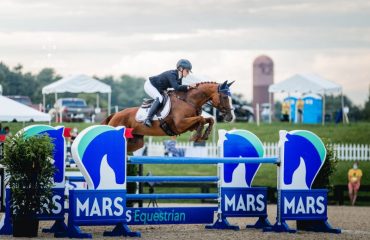 Southern Methodist University junior Kirsten Ostling didn’t always know the ins and outs of the flat ring like she does now. Like most collegiate Equitation on the competitors, the format is something they pick up within the first few weeks of practice. Kirsten credits the smooth transition to her time with Val Renihan at Findlay’s Ridge, who drilled her on the flat and gave her the foundation of maneuvers she needed to succeed in the ring.
Southern Methodist University junior Kirsten Ostling didn’t always know the ins and outs of the flat ring like she does now. Like most collegiate Equitation on the competitors, the format is something they pick up within the first few weeks of practice. Kirsten credits the smooth transition to her time with Val Renihan at Findlay’s Ridge, who drilled her on the flat and gave her the foundation of maneuvers she needed to succeed in the ring.
 Why did you choose SMU equestrian?
Why did you choose SMU equestrian?
Originally, I wasn’t going to ride in college. I thought I was going to pursue an education at Notre Dame. When I didn’t get in, I started looking at my options. My older sister attended SMU. Despite my hesitation in not wanting to follow my sister, the school checked all of the boxes that Notre Dame had checked previously. I took a gap year to focus on riding and realized that I couldn’t live without the sport in college. During that year, I got into SMU and decided to start looking into being a part of the equestrian team. I’m so glad I did!
How difficult was it to pick up on collegiate Equitation on the Flat?
It was bizarre! I originally would go in and the coaches would tell me I was doing a good job, but I felt like I was out of sorts and all over the place. It did take a lot of practice to get used to the format. As a junior, I rode with Val Renihan who stressed the importance of practicing flatwork. Those hour-long flat lessons allowed me to have a solid background and foundation that carried over to competing in collegiate Equitation on the Flat.
How would you describe collegiate Equitation on the Flat to someone unfamiliar to the format?
I would say it’s very similar to a dressage test. There are 10 movements judged out of 10 with an overall score given at the end based on the sum of each judged movement. It’s about showing off your position and your horse in a limited space, while being calculated and accurate with each movement presented to you in the pattern.
What are you focusing on when you step into the ring at a meet?
I always make sure to hit centerline accurately when I enter. That first impression for the judge is so important and it sets the tone for the rest of the pattern. Also, I make sure to focus on riding confidently and forward. The lack of space sucks riders into going slower to make sure they are completing the maneuvers, but it shows skill when you can accurately complete all of the tests at an impulsive, forward pace.
 What was the transition like from being a competitive junior rider to competing at collegiate meets?
What was the transition like from being a competitive junior rider to competing at collegiate meets?
It was definitely something I had to get used to. The biggest difference in the two is the added aspect of teamwork in college. I went from a junior and amateur showing for only myself to competing for something so much bigger than that. I now compete for my team and my university, which has been a change but also a very rewarding experience.
What are you most looking forward to in this upcoming 2019-2020 season?
I’m looking forward to seeing our team grow and change with the new freshmen coming in. This year we really have a shot at getting a National Championship. Last year, the reiners came so close to getting a title and it truly felt like our team was achieving what we work so hard for all year long. We have all the talent and potential to do something like that again this year.













